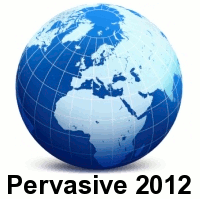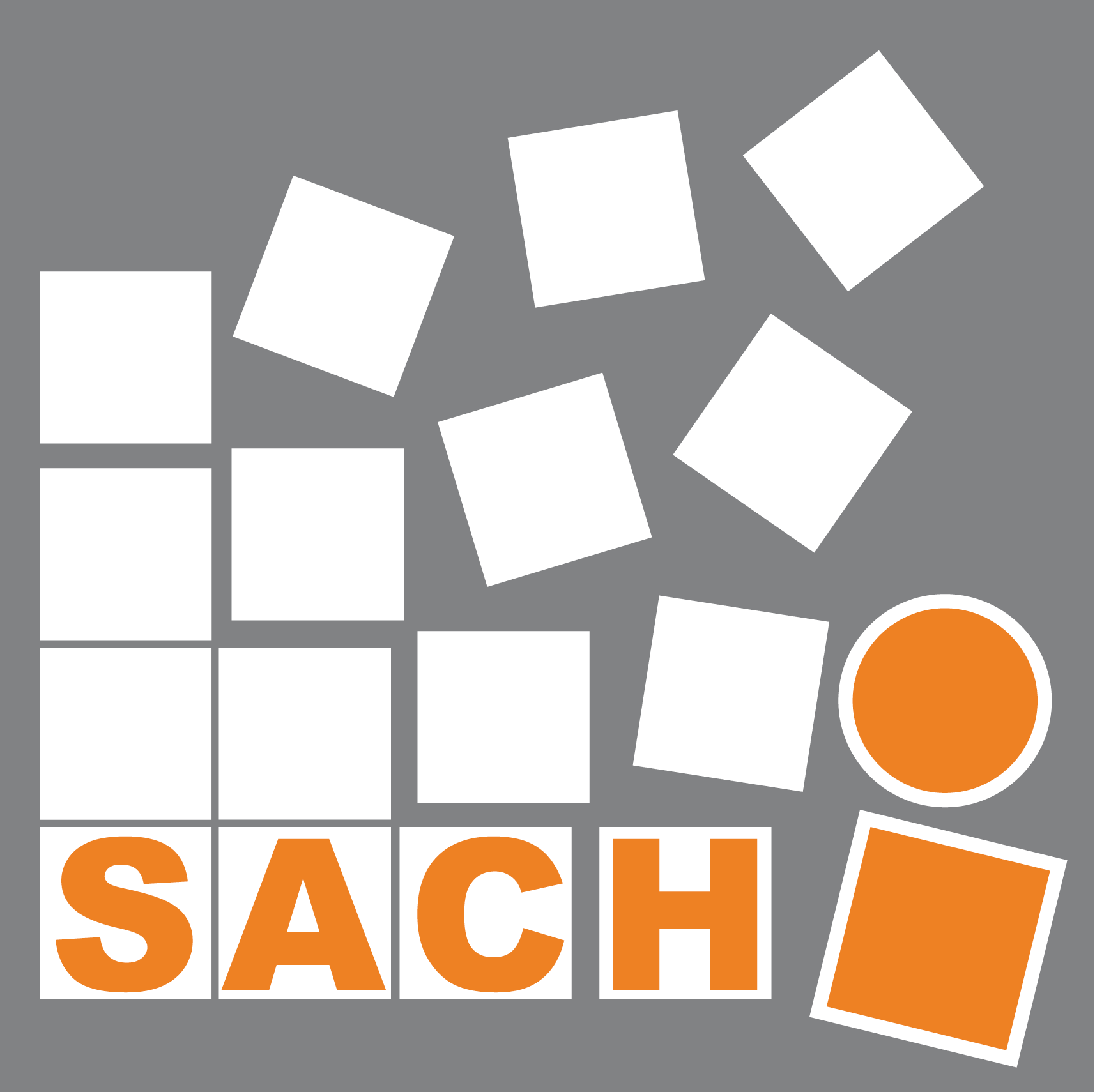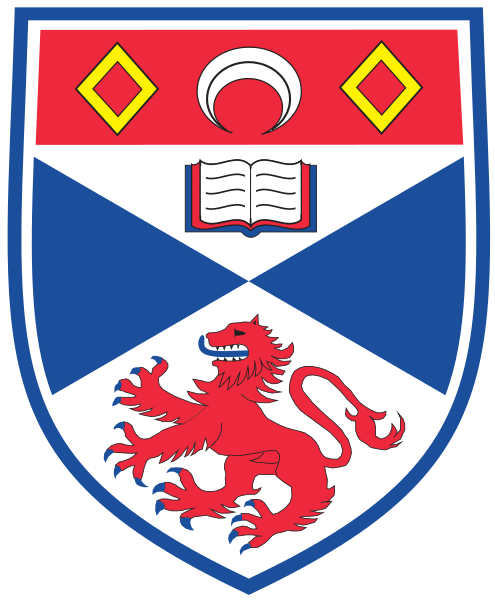Applications to attend our SICSA Summer School on Multimodal Systems for Digital Tourism to be held in St Andrews from June 27th – July 1, 2011 are now open. Full details can be found on our Summer School website at sachi.org.uk/mmi-dt. Thanks to all our guest lecturers who are coming from far and wide and to everyone in SACHI for helping out with this summer school (and we mean everyone!).
The focus of this summer school is to introduce a new generation of researchers to the latest research advances in multimodal systems, in the context of applications, services and technologies for tourists (Digital Tourism). Where mobile and desktop applications can rely on eyes down interaction, the tourist aims to keep their eyes up and focussed on the painting, statue, mountain, ski run, castle, loch or other sight before them. In this school we focus on multimodal input and output interfaces, data fusion techniques and hybrid architectures, vision, speech and conversational interfaces, haptic interaction, mobile, tangible and virtual/augmented multimodal UIs, tools and system infrastructure issues for designing interfaces and their evaluation.
We have structured this summer school as a blend of theory and practice. Mornings are devoted to seminars from our international speakers followed by guided group work sessions or focussed time for project development. We are proving a dedicated lab with development machines for the duration of the school along with access to a MERL Diamondtouch, a Microsoft Surface (v1.0), a range of mobile devices, arduinos, phidget kits, pico-projectors, Kinects and haptic displays. As we expect participants from a range of backgrounds to attend we will form groups who will, through a guided process, propose a demonstrator they can realise during the summer school which they will demonstrate and showcase on the final day.
In addition, Ben Arent a leading interaction designer based in Dublin has agreed to host (subject to sufficient interest) a day long Arduino workshop for interested participants on Sunday June 26th.
Seminar Topics
– Multimodal Interaction for Digital Tourism
– Multimodal Interaction with the Android platform
– Creating Engaging Visitor Experiences in Museums and Heritage sites
– Multimodal Interaction with spatial data
– Speech-driven, hands-free, eyes-free navigation
– Haptic Tabletop Interaction for Digital Tourism
– Natural language generation for Multimodal Interaction
– Mobility as a challenge for interaction design, Tourism as a special case
– Multimodal Augmented-Reality Interaction for Digital Tourism
– Designing context aware-systems
Speakers
– Stephen Brewster, University of Glasgow
– Tristan Henderson, University of St Andrews
– Eva Hornecker, University of Strathclyde
– Antonio Krüger, Saarland University
– William Mackaness, University of Edinburgh
– Miguel Nacenta, University of Calgary
– Jon Oberlander, University of Edinburgh
– Antti Oulasvirta, Helsinki Institute for Information Technology
– Aaron Quigley, University of St Andrews
– Albrecht Schmidt, University of Stuttgart
The deadline for applications to attend is May 3rd, with notifications by May 9th. Participation is limited to 30 and we expect a mix of both national and international participants. The registration fee is £450, which covers four nights of accommodation (Mon – Fri) in St Andrews, breakfast, lunch, dinner and summer school materials. Also included is a welcome reception and farewell dinner. An optional Arduino workshop (with Sunday night accommodation) is an additional £70.
The Scottish Informatics and Computer Science Alliance (SICSA) is providing 16 grants to cover the £450 registration fee for PhD students from most Scottish Universities. See SICSA website for details: http://www.sicsa.ac.uk/
See the summer school website for a full programme, biographies of speakers and full details for applications: http://sachi.org.uk/mmi-dt
The school is directed by Aaron Quigley (University of St Andrews), Eva Hornecker (University of Strathclyde), Jon Oberlander (University of Edinburgh) and Stephen Brewster (University of Glasgow).
News
 Aaron is the current chair of the Steering Committee of the International Conference on Pervasive Computing and today, on behalf of this committee he published a call for proposals to host Pervasive 2012 the Tenth International Conference on Pervasive Computing. You can find full details of this call here.
Aaron is the current chair of the Steering Committee of the International Conference on Pervasive Computing and today, on behalf of this committee he published a call for proposals to host Pervasive 2012 the Tenth International Conference on Pervasive Computing. You can find full details of this call here.
Aaron has also been busy working with his counterpart James Scott the Chair of the Steering Committee of the UbiComp Conference Series in the formation of a new Joint Steering Committee which begins its work in late April of 2011. Good luck to Aaron who will be attending Pervasive 2011 the Ninth International Conference on Pervasive Computing, in San Francisco in June 2011.
<!–Speaker: Per Ola Kristensson, SACHI, University of St Andrews
Date/Time: 1-2pm April 12th, 2011
Location: 1.33a Jack Cole, University of St Andrews (directions)–>
Abstract:
Text entry methods are designed with attention to two objective functions above anything else: high entry rates and a low error rates. However, similar to most other user interfaces, it is likely that users’ satisfaction in using them and ability to use them effectively is the result of many more design traits. This point becomes particularly important to consider when we observe that, despite literally hundreds of mobile text entry methods being proposed in the literature, extremely few of these have gained wider user adoption. To understand why this is, we propose a framework for designing and analyzing mobile text entry methods. Using this framework we analyze the traits of mainstream text entry methods and find that two traits stand out: familiarity and a high effective entry rate. While familiarity is important to consider, too much emphasis on it may risk trapping us forever in a local optimum with multiple similarly performing text entry methods (the so-called path dependency phenomenon). Therefore it is also important to consider the high effective rate. However, what is a sufficiently high entry rate? We propose limiting the search for ever higher entry rates by targeting the inviscid entry rate: the entry rate in which users’ creativity rather than the text entry method is the bottle-neck for efficient text entry. Via a crowdsourcing experiment we have estimated the population mean of the inviscid entry rate to about 50 wpm. When mobile text entry methods have reached this point it may be more worthwhile to consider alternative design dimensions that are currently neglected, such as robustness, comfort and user engagement.
About Per Ola:
Per Ola Kristensson is a Lecturer in Human Computer Interaction at the University of St Andrews. Previously he was a Junior Research Fellow at the University of Cambridge.
Best wishes to Aaron who is travelling to Pordenone Italy next week as a member of the expert panel for the EU coordinating action BRAID. Prior to joining the University of St Andrews he was a member of the consortium which won the grant when he was working in Australia. Prior to this, while working in Ireland, Aaron was the coordinator for the CAPSIL project which fed into and led to BRAID’s formation. Along with developing and leading one of the workpackages in BRAID his guidance helped give the consortium an international dimension beyond the EU. An international view is crucially important in understanding when, where and how ICT can help address the problems ageing brings to the fore for people, society, government and other stakeholders. BRAID is a 24 month project which will develop a comprehensive RTD roadmap for active ageing by consolidating existing roadmaps and by describing and launching a stakeholder co‐ordination and consultation mechanism. It will characterise key research challenges and produce a vision for a comprehensive approach in supporting the well‐being and socio‐economic integration of increasing numbers of senior citizens in Europe.
“The Workshop is the second of five being held in a number of locations around Europe as part of the BRAID project. In order to successfully fulfil the objectives of the project, the consortium recognise and value the need to engage with members of relevant stakeholder groups in order to obtain their opinions and insights on how best to address the pertinent issues. The workshop will therefore benefit from the input of a number of experts, including Aaron, who will speak on topics related to their areas of expertise in order to generate discussion and collaboration amongst stakeholders. This will provide a backdrop for the interactive activities focusing on the vision for BRAID and the contents of the final roadmap being created.”
During this two day workshop Aaron will act as rapporteur in the Parallel Working Groups Session. His research interests in Ubiquitous Computing, Ambient Assisted Living, Surface User Interfaces, Human Computer Interaction are amongst the areas of expertise Aaron will draw from during this workshop. In the months ahead Aaron is working with colleagues in SICSA and across Europe on the formation of an EU Project Proposal in Ambient Assisted Living.
Congratulations to Aaron and his colleagues from across SICSA on being awarded a grant valued at up to £600,000 from the Horizon Fund by the Scottish Funding Council towards the cost of the SMART Tourism project on digital tourism translational research. There are many academic and industry partners involved in this project and we hope this is a first step towards a more sustained and broad based engagement between industry and academia in this area. Within SACHI this programme will closely align with our upcoming summer school of multi-modal interfaces for digital tourism and ongoing digital tourism related research.
The 13 SMEs in the project are technology SMEs with an interest in tourism challenges around Scotland’s visitor attractions. They range from AmbieSense in Aberdeen to Eagle Gardens in Kelso, and from SymetrIQ in Glasgow to Loc8 Solutions in Edinburgh. Commenting on the project, the lead academic Professor Jon Oberlander noted, “The project is built around challenges identified by key stakeholders who operate significant visitor attractions, especially Historic Scotland, Festivals Edinburgh, and Glasgow City Museums. Global ICT players are partnering with us, providing cash and in-kind support: NCR, Microsoft and Google are all on engaged.” The academics involved in this project are from across the SICSA (Scottish Informatics and Computer Science Alliance) SFC-funded research pool.
SICSA is a collaboration of leading Scottish Universities. Our aim is to work together to consolidate and develop Scotland’s position as an international research leader in informatics and computer science (ICS). In Scotland, we have one of the five biggest top-quality research clusters in ICS in the world, with more than 200 world-class academic researchers. We are the foremost cluster of ICS research in the UK: about a sixth of the very best research output comes from Scotland. Smart Tourism helps implement our Knowledge Exchange strategy, which aims to inspire, equip and nurture researchers in Scotland, at all levels, so that they can make a greater economic and social impact.
A dedicated website for this project will come online in due course.
Per Ola Kristensson who is arriving to St Andrews today and joins us next week has been selected for the Scottish Crucible 2011 Personal and Professional Leadership and Development programme. The programme is sponsored by the Royal Society of Edinburgh, the Scottish Funding Council and the National Endowment for Science, Technology and the Arts (NESTA). “The scheme enables 30 talented researchers from a variety of disciplines to come together to explore and expand their creative capacity and problem-solving potential. As well as its personal impact, NESTA’s Crucible programme has led to numerous interdisciplinary collaborations for its participants and has established itself as an innovative way of empowering researchers and adding value to their institutions.” Our congratulations to Per Ola on a great start here with SACHI.
Aaron is giving a seminar at the HCI Group in the School of Computer Science in the University of Birmingham on the 28th of March. This talk will focus on Information Visulisation of Social-* data (where * are networks, media, streams, search activity and records of information dissemination etc). In addition he will discuss how we can infer patterns of individual or collective behaviour through analysis, data mining, confirmatory and exploratory visulisation.
This talk first overviews our research in SACHI before leading into an in depth exploration of one of our key topics, namely Information Visualisation and its application to Social-* data. Information Visualisation is a research area that focuses on the use of graphical techniques to present data in an explicit form. Such static (pictures) or dynamic presentations help people formulate an understanding of data and an internal model of it for reasoning about. Such pictures of data are an external artefact supporting decision making. While sharing many of the same goals of Scientific Visualisation, Human Computer Interaction, User Interface Design and Computer Graphics, Information Visualisation focuses on the visual presentation of data without a physical or geometric form. As such it relies on research in mathematics, data mining, data structures, algorithms, graph drawing, human-computer interaction, cognitive psychology, semiotics, cartography, interactive graphics, imaging and visual design.
In this talk I will present a brief history of social-* analysis and visualisation, introduce layout algorithms we have developed for visualising such data. I will complete with a detailed case study on the layout of evolving or “dynamic graphs” extracted through SNAP, our Social Network Assembly Pipeline. SNAP operates on the premise of “social network inference” and we have studied it experimentally with the analysis of 10,000,000 record sets without explicit relations.

<!–Speaker: Chris Speed, Edinburgh School of Architecture and Landscape Architecture
Date/Time: 1-2pm March 29th, 2011
Location: 1.33a Jack Cole, University of St Andrews (directions)–>
Abstract:
The term ‘internet of things’ refers to the technical and cultural shift that is anticipated as society moves to a ubiquitous form of computing in which every device is ‘on’, and every device is connected in some way to the internet. However, many versions of the ‘internet of things’ rely upon one premise: that the thing remains in existence. This paper forecasts a near future when digital memories that have been associated with artefacts remain as the only reference to that thing, because that thing has been lost or disposed of. Remaining as entries in databases whilst its material instantiation has been crushed, burnt or tipped into a landfill, the immaterial artefact has the potential to live on within the networks society. Alive and well in the cloud, these ghosts will haunt their makers, distributors, vendors and owners forever, remaining as searchable artefacts that can be correlated against any other data from the past, present or future.
In this seminar Chris Speed will reflect upon recent research / art projects that evoke a sense of time and exhume personal memories of the past.
About Chris:
Dr. Chris Speed is Reader in Digital Spaces at the Edinburgh School of Architecture and Landscape Architecture where he teaches undergraduate, masters and supervises PhD students.
Chris has sustained a critical enquiry into how digital technology can engage with the field of architecture and human geography through a variety of established international digital art contexts including: International Symposium on Electronic Art, Biennial of Electronic Arts Perth, Ars Electronica, Consciousness Reframed, Sonic Acts, LoveBytes, We Love Technology, Sonic Arts Festival, MELT, Less Remote, FutureSonic, and the Arts Catalyst / Leonardo symposium held alongside The International Astronautical Congress.
Chris is currently working with collaborative GPS technologies and the streaming of social and environmental data. He is the lead academic on a GPS tool for historical maps iPhone application: Walking Through Time, is the leader of a large UK academic team investigating social memory within the ‘Internet of Things’ funded by the UK Research Councils and is the co-developer for the locative media application Comob Net available for download in the Apple iPhone App Store developed in conjunction with Jen Southern (independent artist) and colleagues from ECA and Uni Edinburgh.

Our new Android phone testbed, comprising 20 HTC Desire smartphones, has arrived. This equipment comes courtesy of Tristan’s Privacy Value Networks grant and will be used, amongst others, by Iain for his work on privacy-aware interfaces and systems for mobile opportunistic networks.
The February 2011 SICSA Newsletter highlighted details on the establishment of SACHI, the St Andrews Computer Human Interaction research group along with details of our two new SICSA lecturers in SACHI Per Ola Kristensson and Miguel Nacenta. Dr Per Ola Kristensson will be joining the University of St Andrews as a lecturer in March 2011 from his current position at the University of Cambridge. Per Ola is interested in creating interactive systems that enable people to be more creative, expressive and satisfied in their daily lives. He will become the second supervisor for Jakub Dostal a SICSA PhD student in SACHI. For more information visit his full website or follow him on twitter @pokristensson.






